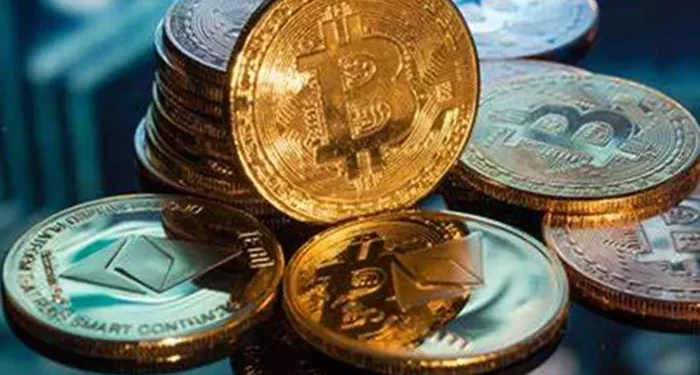Digital currency has become a major part of the modern financial world. Many people use it for investments, payments, and even as a store of value. But when did it all begin? The history of digital money goes back further than most people think. It did not start with Bitcoin. Instead, the idea of digital currency has evolved over decades. This article explores the key moments in the development of digital money, from early experiments to the rise of cryptocurrencies.
Early Concepts of Digital Money
Long before Bitcoin, computer scientists and economists imagined digital currencies. In the 1980s and 1990s, people began exploring ways to create money that existed only in digital form.
One of the first attempts was DigiCash, founded by David Chaum in 1989. Chaum was a cryptographer who wanted to make online payments private and secure. DigiCash used cryptographic techniques to allow anonymous transactions. However, the company failed in the late 1990s because it did not gain enough users.
Around the same time, other digital payment systems appeared. E-gold, launched in 1996, allowed users to transfer gold-backed digital currency. It became popular but was eventually shut down due to legal issues. Another system, WebMoney, started in 1998 and is still used today in some countries.
These early experiments showed that digital money was possible. However, they relied on central authorities, meaning a company or bank controlled the system. This made them vulnerable to regulation and failure. The real breakthrough came with the invention of decentralized digital currency.
The Birth of Bitcoin
In 2008, a person or group using the name Satoshi Nakamoto published a paper titled “Bitcoin: A Peer-to-Peer Electronic Cash System.” This paper introduced the idea of a decentralized digital currency. Unlike earlier systems, Bitcoin did not need a central bank or company to operate. Instead, it used blockchain technology to record transactions securely.
The Bitcoin network went live in January 2009. The first block, called the “genesis block,” was mined by Nakamoto. In the early days, only a few people knew about Bitcoin. Some enthusiasts mined coins using regular computers. The first real-world Bitcoin transaction happened in 2010 when a programmer paid 10,000 BTC for two pizzas.
Bitcoin solved a major problem in digital money: double-spending. Earlier digital currencies could be copied and spent more than once. Bitcoin’s blockchain prevented this by recording every transaction publicly. This innovation made Bitcoin the first successful decentralized cryptocurrency.
The Rise of Altcoins
After Bitcoin’s success, other cryptocurrencies began to appear. These are often called “altcoins,” meaning alternative coins.
Litecoin, launched in 2011, was one of the first major altcoins. It was designed to be faster and lighter than Bitcoin. Another important cryptocurrency, Ripple (XRP), was created in 2012 for fast international payments.
Ethereum, launched in 2015, brought a major innovation: smart contracts. These are self-executing agreements written in code. Ethereum allowed developers to build decentralized applications (dApps) on its blockchain. This made it more than just a currency—it became a platform for new financial technologies.
Over time, thousands of cryptocurrencies were created. Some, like Dogecoin, started as jokes but gained real value. Others focused on privacy, like Monero and Zcash. The cryptocurrency market grew rapidly, attracting investors and businesses.
Government Reactions and Regulations
As cryptocurrencies became popular, governments started paying attention. Some countries welcomed digital currencies, while others banned them.
In 2013, the U.S. government recognized Bitcoin as a legal form of money. However, it also imposed regulations to prevent illegal activities. China, on the other hand, banned cryptocurrency exchanges in 2017 but later explored creating its own digital currency.
Many central banks began researching Central Bank Digital Currencies (CBDCs). These are digital versions of national currencies, controlled by governments. Unlike Bitcoin, CBDCs are centralized. Countries like Sweden and the Bahamas have already tested their own digital currencies.
The Growth of DeFi and NFTs
In recent years, new trends have emerged in the cryptocurrency world. Decentralized Finance (DeFi) allows people to lend, borrow, and trade without banks. Platforms like Uniswap and Aave use smart contracts to automate financial services.
Non-Fungible Tokens (NFTs) also became popular. These are unique digital assets representing art, music, or even virtual land. While NFTs are not currencies, they use the same blockchain technology.
The Future of Digital Currency
Digital currency has come a long way since the early experiments. Today, cryptocurrencies are used for payments, investments, and new financial systems. Governments and businesses are adopting blockchain technology. Some experts believe digital currencies will replace traditional money in the future.
However, challenges remain. Cryptocurrencies are volatile, and scams are common. Regulations are still evolving. Despite these issues, the growth of digital currency shows no signs of slowing down.
Conclusion
The history of digital currency is a story of innovation and change. From early experiments like DigiCash to the rise of Bitcoin and beyond, digital money has transformed finance. Today, cryptocurrencies and blockchain technology are shaping the future of money. While challenges exist, the potential for a decentralized financial system is enormous. The journey of digital currency is far from over, and its impact will continue to grow in the years ahead.
Related Topics:
What Is Cryptocurrency Explained
What Would Happen If The Central Bank Issued Digital Currency

















